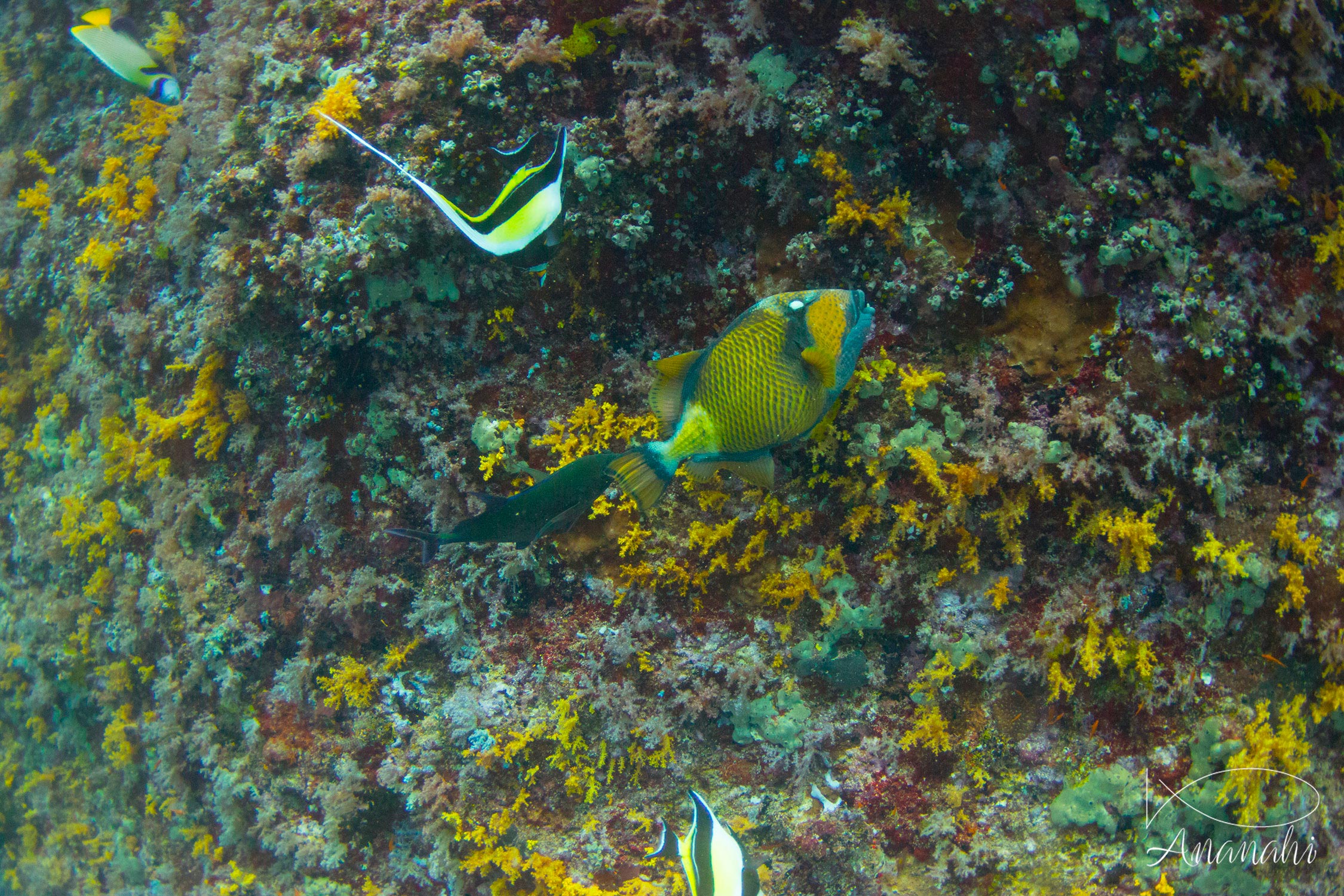
Scientific name: Balistoides viridescens
Size: Up to 2,8 feet
Color: Greenish, orange and yellow
Distinguishing feature: Oval body, greenish, with yellow-orange head and yellow tail. Second dorsal and anal fin behind the body. Small mouth with big teeth.
Where did we see it: Bali and Gili, Zanzibar, Thailand, Maldives

Scientific name: Balistoides viridescens
Size: Up to 2,8 feet
Color: Greenish, orange and yellow
Distinguishing feature: Oval body, greenish, with yellow-orange head and yellow tail. Second dorsal and anal fin behind the body. Small mouth with big teeth.
Where did we see it: Bali and Gili, Zanzibar, Thailand, Maldives
It is the largest species of triggerfish.
Outside the breeding season, it's a fearful animal. However, during the breeding season, it will defend its nest if you approach and it may attack some swimmers or divers.
The protection zone is conical towards the surface, the tip of the cone being the nest. It is therefore more likely to be attacked on the surface than at the bottom of the water.
Turtles are in economy mode when they are sleeping. If they are woken during night, they may not have enough air to return to surface.
So, please be careful during night dives!
Parrotfish create a protective envelope around them when they are sleeping.
So, don't put the light on them during night dive to don't to wake them up and break this envelope.
We can hear the bull shark is very dangerous because of attacks near La Réunion island.
However, tens of them are living at 600 feet from the famous beach of Playa Del Carmen in Mexico. And there are no attacks.